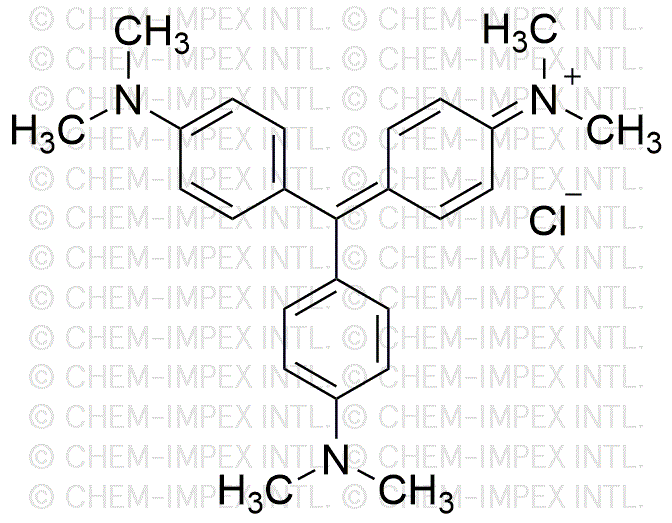Crystal violet is widely utilized in research focused on:
- Biological Staining: Commonly used in microbiology to stain cells, making it easier to visualize bacteria under a microscope. This application is crucial for identifying and classifying microorganisms in clinical and research settings.
- Histology: Employed in tissue staining protocols, particularly for differentiating between various cell types in histological samples. This aids pathologists in diagnosing diseases by providing clear visual contrasts in tissue samples.
- Antimicrobial Agent: Used in various formulations to treat skin infections due to its antibacterial properties. It is particularly effective against gram-positive bacteria, making it valuable in dermatology.
- Indicator in Titrations: Functions as a pH indicator in analytical chemistry, helping researchers determine the acidity or alkalinity of solutions. Its distinct color change at specific pH levels enhances the accuracy of titration results.
- Research in Cell Biology: Utilized in experiments to study cell membrane integrity and permeability, providing insights into cellular processes and the effects of various treatments on cell health.
General Information
Properties
Safety and Regulations
Applications
Crystal violet is widely utilized in research focused on:
- Biological Staining: Commonly used in microbiology to stain cells, making it easier to visualize bacteria under a microscope. This application is crucial for identifying and classifying microorganisms in clinical and research settings.
- Histology: Employed in tissue staining protocols, particularly for differentiating between various cell types in histological samples. This aids pathologists in diagnosing diseases by providing clear visual contrasts in tissue samples.
- Antimicrobial Agent: Used in various formulations to treat skin infections due to its antibacterial properties. It is particularly effective against gram-positive bacteria, making it valuable in dermatology.
- Indicator in Titrations: Functions as a pH indicator in analytical chemistry, helping researchers determine the acidity or alkalinity of solutions. Its distinct color change at specific pH levels enhances the accuracy of titration results.
- Research in Cell Biology: Utilized in experiments to study cell membrane integrity and permeability, providing insights into cellular processes and the effects of various treatments on cell health.
Documents
Safety Data Sheets (SDS)
The SDS provides comprehensive safety information on handling, storage, and disposal of the product.
Product Specification (PS)
The PS provides a comprehensive breakdown of the product’s properties, including chemical composition, physical state, purity, and storage requirements. It also details acceptable quality ranges and the product's intended applications.
Certificates of Analysis (COA)
Search for Certificates of Analysis (COA) by entering the products Lot Number. Lot and Batch Numbers can be found on a product’s label following the words ‘Lot’ or ‘Batch’.
*Catalog Number
*Lot Number
Certificates Of Origin (COO)
This COO confirms the country where the product was manufactured, and also details the materials and components used in it and whether it is derived from natural, synthetic, or other specific sources. This certificate may be required for customs, trade, and regulatory compliance.
*Catalog Number
*Lot Number
Safety Data Sheets (SDS)
The SDS provides comprehensive safety information on handling, storage, and disposal of the product.
DownloadProduct Specification (PS)
The PS provides a comprehensive breakdown of the product’s properties, including chemical composition, physical state, purity, and storage requirements. It also details acceptable quality ranges and the product's intended applications.
DownloadCertificates of Analysis (COA)
Search for Certificates of Analysis (COA) by entering the products Lot Number. Lot and Batch Numbers can be found on a product’s label following the words ‘Lot’ or ‘Batch’.
*Catalog Number
*Lot Number
Certificates Of Origin (COO)
This COO confirms the country where the product was manufactured, and also details the materials and components used in it and whether it is derived from natural, synthetic, or other specific sources. This certificate may be required for customs, trade, and regulatory compliance.


